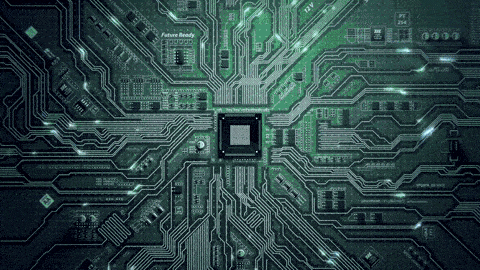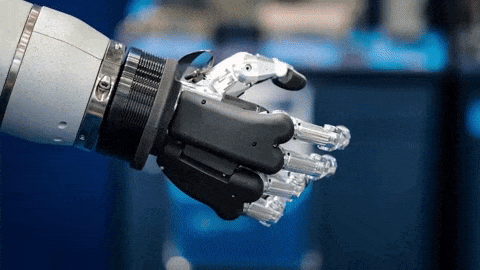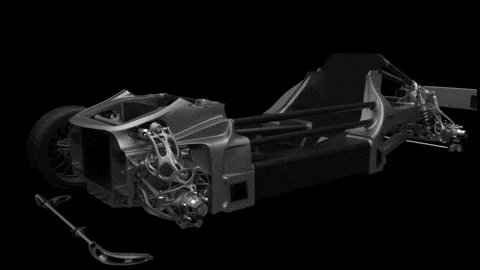A much-anticipated session at the annual OurCrowd Global Investor Summit is the presentation of what OurCrowd predicts will be the top 10 tech trends for the year ahead, reflecting the views of our investment team as well as input from our global network. In light of the end of the decade and this year’s Summit theme, “Startups: Going Beyond,” we identified some of the trends that will shape the tech landscape for the next 10 years.

1. Lab Food Gets Tasty
With global demand for meat and seafood at an all-time high, supply in the decades to come will not be able to keep up. Meat production has grown five-fold in the past 60 years, adversely affecting the environment and increasing animal suffering. The growing demand for seafood has caused massive overfishing and has cut marine species populations by half since 1970.
Aleph Farms is changing that by growing steaks in bioreactors – steaks that look and taste as if they came from a cow. San Diego-based BlueNalu is pioneering the category of cellular aquaculture in seafood – creating fish fillets in production plants. Beyond Meat and Ripple are leaders in plant-based food alternatives.

2. Mind Over Matter: Our Brains Get Wired
The human brain has been evolving for the past 1.5 million years, while the first machines were invented just 200 years ago. This has caused a significant time gap in how we communicate with machines. Brain-Computer Interface (BCI) is a direct communication pathway between an enhanced or wired brain and an external device.
Although this is a new market, Facebook recently acquired the startup CTRL-Labs for just under $1 billion. CTRL-Labs recognizes conscious intention and translates it into action. Elon Musk founded NeuraLink, whose brain implants directly link human minds to computers. CorrActions is a plug & play, non-invasive SaaS platform that can read your mind and intentions, even before conscious awareness, and translate it into actions.

3. The Race to Autonomous Driving Becomes a Marathon
Just two years ago, most analysts predicted we would see large-scale deployments of autonomous vehicles by the middle of the decade. Since then, the technical challenges involved have moved the timeline out considerably. Autonomous vehicles have embedded a huge promise in terms of passengers and pedestrian safety.
Companies such as Cartica and Brodmann17 are bringing new innovations in AI technology that can bridge the safety gap until full autonomy is reached. Other companies, such as Viziblezone, are focusing on protecting the lives of pedestrians against road accidents by using our smartphones as an advanced sensor for pedestrian locations, day and night.

4. AI Beats Moore’s Law
Moore’s Law is a prediction made by American engineer Gordon Moore in 1965 that the number of transistors per silicon chip would double every two years. This prediction became a self-fulfilling prophecy and a driving force of the tech industry.
A year ago, Nvidia’s CEO said that Moore’s Law is no longer possible. A Stanford report, however, shows the exact opposite: prior to 2012, AI results closely tracked Moore’s Law, with computing power doubling every two years. After 2012, however, AI computational power accelerated faster than traditional processor development, causing it to double every three and a half months!
Companies, such as Hailo and NeuroReality, are a part of this revolution. Hailo has developed a specialized deep-learning processor for edge devices and NeuroReality is designing the next evolution of AI-as-a-Service infrastructure.

5. If You’re Not Scared of the Dark, You Should Be
The Dark Web is the part of the internet that cannot be indexed by search engines like Google. This hidden world is a hot spot of various sorts of illegal activity: drugs, human trafficking, stolen IDs, and much more. It has also become the preferred location for hackers to orchestrate and plan their cyber-attacks on enterprises.
Companies such as Sixgill are automatically searching the Dark Web to locate any sign of cyber threat against enterprises and provides real-time actionable threat intelligence to their customers.

6. Productivity Leaps Ahead to Discovery
Why work hard, doing the same thing over and over again? We believe that the next trend for 2020 is that anything that can be automated, will be automated. Due to advancements in AI and Machine Learning, we can easily and intuitively automate processes. The “early adopters” of the automation trends will most likely be developers who, instead of writing code, will use low- and no-code tools.
The startup NoCode is expected to reach a market cap of $52 billion by 2024, according to analysts at RBC Capital Markets. This revolution will be led by corporations such as Microsoft, but startups also play a crucial role:
- Kaholo, which developed a visual development environment for any automation needed for DevOps and cuts development time from days to hours
- NetOp, the first autonomously operated network infrastructure.
- Kryon Systems, which provides full-cycle and intelligent robotic process automation

7. Looking Good Means Feeling Good: Computer Vision Drives Healthcare
Recent advances in Computer Vision and AI have created a growing wave of companies that aim to improve our lives and protect us from illness:
- SightDX combines AI and breakthrough hardware to bring lab-quality blood count results to the doctor’s office
- Kemtai is using AI and Computer Vision to transform our laptops or iPads into virtual trainers that help us improve our physical training at home
- Scopio is redefining microscopy with a breakthrough high-resolution imaging system, enabling experts to perform more powerful analysis with the help of AI

8. Robots Will Play Nicely Together
Last year, we spoke about the Robotic Process Automation (RPA) revolution – that robots would be taking your jobs. However, what if the job you are doing is dependent on other people or other robots? What happens if one is stuck or injured? What if the work you’re doing is not repetitive, but changes according to circumstances?
Collaborative robots represent a new realm of the fast-growing robotics market. Technological advancements have made the application of collaborative robots a reality by using advanced AI technology while improving production efficiency and reducing operational cost. Not only will robots be able to communicate with one another, but they will also be able to communicate with us, becoming an inherent part of our teams. Brillianetor is a SaaS solution that provides robots with collective autonomous decision-making capabilities.

9. Materials Become Material
We’re seeing innovation being applied to both new and old materials:
- The Super Bowl used easier-to-recycle aluminum instead of plastic for beverages
- Boeing introduced a new plane with 3D-printed turbine blades
- Nissan developed a new “acoustic meta-material” for making vehicles quieter
- Labs are creating regenerative building materials from sand and bacteria
Israeli startups, such as SolCold, are even developing materials that cool buildings when they are hit by sunlight. Simultaneously, other startups, such as Material Zone, are working on aggregating, normalizing, and sharing materials science tests to help companies get the most out of their R&D dollars.

10. Schrödinger's Catfight Over Quantum Supremacy
As we barrel towards a smarter existence, we require faster, more advanced technology. Quantum computers are an exponentially scalable and highly parallel computing model. Google estimates that there are only 800 people in the world with the know-how to build quantum systems. This is why it’s not surprising that the majority of advancements in the field comes from the giants themselves:
- At the beginning of 2019, IBM announced IBM Q, its first-ever circuit-based commercial quantum computer.
- In March, Google announced it had achieved "Quantum Supremacy."
- Nissan developed a new “acoustic meta-material” for making vehicles quieter
- At the end of 2019, Amazon joined the race and unveiled "Braket," its quantum computing service.
- Two weeks ago, Google and IBM stated that in less than five years, quantum computers would be able to break the encryption we use today.
Companies such as QuantLR are solving this exact pain. QuantLR protects next-generation networks and the entire internet, using quantum technology.
That's a wrap for what we predict to be the top 10 tech trends.
This article is contributed by OurCrowd. The views and opinions expressed or implied are those of OurCrowd and not necessarily those of UOB and are subject to change without notice. OurCrowd and UOB accept no liability whatsoever for any loss arising from any use of or reliance on this article.



